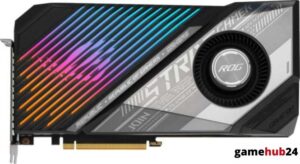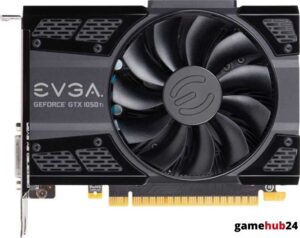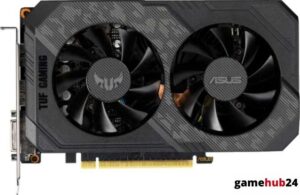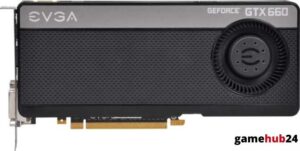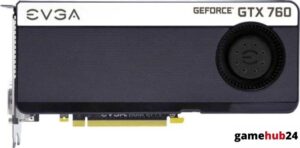Playing games in virtual reality (VR) is a captivating experience that introduces you to its main players, unique features, and how important 3D and immersive gaming are to enhancing the VR experience. Learn about the nuances of creating virtual reality games, essential accessories, and next developments in multiplayer VR gaming.
The virtual reality game industry is constantly changing and led by major players such as Oculus Rift, HTC Vive, PlayStation VR, Samsung Gear VR, and Google Cardboard. These systems have special advantages that open up VR gaming to a larger audience, like affordability and immersive experiences. VR is not possible without immersive and 3D gaming, which offers an engagement level that is superior to that of conventional 2D gaming. The process of creating a VR game is difficult and demands a thorough understanding of VR technology. The VR experience is enhanced by necessary attachments like motion controllers and external sensors, and multiplayer VR gaming is reshaping interactive gaming in the future.
- Oculus Rift, HTC Vive, PlayStation VR, Samsung Gear VR, and Google Cardboard are key players in the VR gaming market.
- Immersive and 3D gaming are central to the VR experience, offering a level of engagement that traditional 2D gaming can’t match.
- VR game development requires a deep understanding of VR technology and its unique capabilities and constraints.
- Accessories like motion controllers and external sensors can enhance the VR gaming experience.
- Multiplayer VR gaming is shaping the future of interactive gaming, offering a new level of social interaction and cooperation.
| VR Gaming Platform | Key Features | Unique Selling Point |
|---|---|---|
| Oculus Rift | High resolution, high refresh rate, Touch controllers | Immersive gaming technology with a robust library of interactive VR games |
| HTC Vive | Room-scale experiences, high-resolution display, wide field of view | Allows users to physically move around in their virtual environments |
| PlayStation VR | Integration with PlayStation console, high refresh rate, strong lineup of exclusive games | Seamless integration with a popular gaming console |
| Samsung Gear VR | Affordable, leverages smartphones for display | Makes VR gaming accessible to a wider audience |
| Google Cardboard | Affordable, leverages smartphones for display | Makes VR gaming accessible to a wider audience |
This table provides a comparison of key VR gaming platforms, highlighting their key features and unique selling points.
What are the key players in the VR gaming market?
Within the VR game industry, a select group of major players hold a dominant position. Offering a variety of immersive and engaging virtual reality gaming experiences, Oculus Rift, a division of Facebook (now Meta), has been a leader in the field. Conversely, HTC Vive has made a name for itself with premium virtual reality gaming devices that offer unmatched virtual reality gameplay. Significant progress has also been achieved by Sony’s PlayStation VR, which offers a smooth interface with its well-liked game platform. Google Cardboard and Samsung Gear VR, on the less expensive end of the market, have opened up VR gaming to a larger audience. The development and expansion of virtual reality gaming has been greatly aided by each of these organizations.
What makes Oculus Rift a top choice for VR gaming?
For virtual reality gaming, Oculus Rift has become the preferred option because of a number of characteristics. Its immersive gaming technology offers an extensive virtual reality gaming experience, especially when combined with a large selection of interactive VR games. The headset’s easy-to-use Touch controls provide accurate motion tracking, and its high resolution and refresh rate guarantee clear, fluid images. Additionally advantageous to Oculus Rift is Meta’s support, which contributes significant funds for ongoing research and development.
How does HTC Vive compare to other VR gaming headsets?
HTC Vive distinguishes itself in the virtual reality game industry by emphasizing room-scale experiences. The Vive improves immersion because it lets players move around physically in virtual worlds, which is not possible with many other VR gaming headsets. Its wide field of view and high-resolution display add even more to the immersive virtual reality gaming experience. The Vive is also a flexible option for VR fans because to its large game catalog and interoperability with a variety of VR gaming platforms.
It may surprise you to learn that virtual reality has existed for many years. VPL Research developed the first virtual reality headset in the 1980s, which they called the EyePhone (not to be confused with Apple’s iPhone!). It was utilized in conjunction with a gadget known as the DataGlove, which monitored hand movements. Nintendo also dabbled in virtual reality (VR) in the 1990s with the Virtual Boy system, but the big boom in VR didn’t occur until 2012 with the development of the Oculus Rift, which was supported by Facebook (now Meta).
What are the unique features of PlayStation VR?
Sony’s foray into the VR gaming industry with the PlayStation VR offers a number of special features. Its interface with the PlayStation console allows gamers to leap into VR with a device they’re already familiar with. For fluid visuals, the headset has a high refresh rate and a comfortable fit. PlayStation VR also offers a solid portfolio of exclusive games, using Sony’s established partnerships with game creators. These features combine to make PlayStation VR a strong contender in the VR gaming landscape.
How do Samsung Gear VR and Google Cardboard fit into the VR gaming scene?
Samsung Gear VR and Google Cardboard have carved out their niche in the VR gaming market by making the technology more accessible. These headgear, which use cellphones as their displays, provide a more accessible entry point into virtual reality. While they may not give the same level of realism or interactivity as higher-end systems, they provide a taste of what VR gaming has to offer. In doing so, they’ve opened up VR to a broader audience and have played a significant part in popularizing the technology.
What is the role of immersive and 3D gaming in VR?
3D and immersive gameplay is the core of what sets virtual reality apart. These technologies give players a sense of presence that immerses them in virtual environments and increases player engagement beyond what is possible with traditional 2D gaming. Immersive and 3D gaming in virtual reality (VR) offers experiences that are both captivating and unforgettable, whether it’s exploring a magical setting, interacting with virtual items, or fighting against other people.
How does immersive gaming enhance the VR experience?
One of the main features of VR is immersive gaming. It improves virtual reality by giving players the impression that they are actually inside the game world. This is made possible by a blend of excellent graphics, realistic 3D sound, and user-friendly controls that adapt to the player’s actions. Through the use of many senses, virtual reality (VR) immersive gaming produces a compelling illusion of reality that amplifies the emotional effect of games and results in a more captivating and unforgettable experience.
The comfort of the player is a crucial factor to take into account while creating VR games. Motion sickness, which can happen when a player’s visual experience of movement differs from their actual movement, is a prevalent problem with virtual reality. Many virtual reality games address this by providing players with a variety of movement options, including smooth locomotion and teleportation, so they can select the option that best suits their needs. Additionally, take into account using a game engine that supports VR development out of the box, such as Unity or Unreal Engine.
What are the benefits of 3D gaming in VR?
Playing 3D games in virtual reality truly adds a new level of gameplay. With virtual reality (VR), objects and game environments are rendered in three dimensions, giving a depth of field that is not possible with flat screens. Because of their increased ability to sense depth and distance, players may engage with the gaming environment more naturally, resulting in experiences that are more realistic and engaging. 3D gaming in virtual reality (VR) allows users to feel like they’re a part of the game environment rather than just onlookers, whether they’re reaching out to grasp an object, looking around a corner, or staring out over a huge landscape.
How is augmented reality gaming different from VR gaming?
While immersive experiences are provided by both virtual reality (VR) and augmented reality (AR) games, they do so in quite different ways. AR adds digital components to the actual world, whereas VR immerses users in fully virtual situations. This indicates that since AR games frequently incorporate the player’s real environment, they tend to be more rooted in reality. However, VR gaming gives you more creative freedom to make completely original worlds and experiences. Each technology has advantages and special opportunities for game designers.
What goes into VR game development?
The process of creating virtual reality games is intricate and encompasses many different fields. It calls for not just conventional game design ability but also a thorough comprehension of the special potential and limitations of virtual reality technology. This includes understanding spatial audio design, 3D modeling and animation, and creating user-friendly control systems that make the most of virtual reality’s immersive potential. Furthermore, developing VR games frequently entails addressing particular difficulties like motion sickness to guarantee accessibility and comfort for a variety of users.
What is the importance of motion tracking in VR?
A vital element of VR gaming is motion tracking. It enables the player’s movements to be tracked by the system and translated into the game environment. In order to enable players to move and look around in virtual space, this can require tracking the orientation and position of the headset in addition to tracking hand movements for more engaging gameplay. For VR to create a sense of presence and give players the impression that they are actually inside the game world, accurate motion tracking is essential. Because players may interact with the gaming world in the same way they do with the real world, it also makes more natural and intuitive controls possible.
How does interactive gaming work in VR?
VR interactive gaming functions by enabling more direct and organic player-world interaction. Players can use their natural hand movements to hurl virtual balls, wield virtual swords, and reach out and grasp virtual things instead of just hitting buttons on a controller. Motion tracking technology, which monitors the position and direction of the player’s hands and incorporates these movements into the game, makes this possible. This degree of interaction makes for a more immersive and fulfilling virtual reality gaming experience by enhancing the sense of presence and immersion.
What software is used for VR game development?
VR game production uses a variety of software tools, each with a distinct function. Two of the most well-liked VR game engines are Unity and Unreal Engine, which offer the fundamental resources for building 3D worlds, automating gameplay, and maximizing efficiency. For 3D modeling and animation, programs like Blender or Maya are utilized, while for audio design, programs like FMOD or Wwise are employed. Additionally, the construction of VR-specific elements like motion controls or teleportation mechanics can be made simpler with the usage of specialized tools like VRTK or MRTK.
What are the essential VR gaming accessories?
Although the most obvious prerequisite for VR gaming is a VR headset, there are a few more devices that might improve the experience. These can include external sensors or cameras for better motion tracking, or motion controllers for more interactive gaming. While comfort equipment like padded head straps or lens inserts can make the VR experience more comfortable for longer play times, other accessories like VR treadmills or haptic feedback devices can further enhance immersion.
What role do VR gaming platforms play in the gaming experience?
VR gaming platforms are essential to the gaming experience since they supply the software framework needed to run VR games. This includes the marketplace where users can find and buy games, the operating system on the VR headset, and the social features that let users interact with friends and other players. In addition to offering the development tools needed by developers to create their games, these platforms frequently establish industry norms for comfort levels and control methods. As a result, the VR gaming experience as a whole may be greatly impacted by the platform selection.
How do VR gaming consoles enhance the gaming experience?
By offering a specialized platform for VR gaming, VR gaming consoles such as the PlayStation VR improve the gaming experience. These VR-focused consoles offer enhanced performance together with a carefully selected selection of VR games. Because they do not require a sophisticated PC or a laborious setup procedure, they also offer a more simplified and user-friendly experience. Furthermore, VR gaming systems frequently include controllers specifically made for the technology, allowing for more engaging and participatory gameplay.
What are the must-have VR gaming accessories?
Certain essential attachments can improve virtually any VR gaming experience, albeit the exact ones will depend on the VR system and the tastes of the particular player. Long gaming sessions can be more pleasurable with a comfortable and adjustable headset, but interactive gameplay requires a solid set of motion controllers. External sensors or cameras can increase the precision of motion tracking for users of VR systems that fill a room. A good set of headphones for immersive sound, a charging station to keep controllers charged, or even a VR cover to shield the headset from wear and perspiration are some other helpful extras.
How is multiplayer VR gaming shaping the future of interactive gaming?
Because multiplayer virtual reality gaming offers a new degree of social involvement and cooperation, it is reshaping the future of interactive gaming. Multiplayer virtual reality games enable players to interact, communicate, and share a common virtual area in ways that are not achievable in traditional games. This creates new gaming opportunities, such as competitive games that utilize VR’s special features or cooperative puzzles requiring physical coordination. Multiplayer VR gaming is probably going to play a bigger role in the game industry as VR technology advances.
What are the top multiplayer VR games currently on the market?
At the moment, a wide variety of multiplayer virtual reality games are available for purchase. While games like “Onward” or “Echo VR” offer competitive multiplayer action, games like “Rec Room” and “VRChat” offer social areas where players can hang around and engage in a range of activities. Players must cooperate in cooperative games like “Arizona Sunshine” and “Keep Talking and Nobody Explodes” in order to overcome obstacles. These games offer distinctive experiences that make the most of the possibilities of the technology, showcasing the potential of multiplayer VR gaming.
How are VR gaming studios innovating in the multiplayer space?
VR game companies are leading the way in multiplayer innovation in several ways. Some developers are utilizing virtual reality (VR) to create games that simulate physical presence, enabling more organic and intuitive methods for players to engage with one another. Others are experimenting with novel forms of gameplay, such as cooperative puzzle solving and zero-gravity sports, that are exclusive to virtual reality. Others are extending the possibilities of social VR by developing online communities where users may interact and exchange stories. The possibilities for multiplayer VR gaming are constantly being expanded by these advancements.
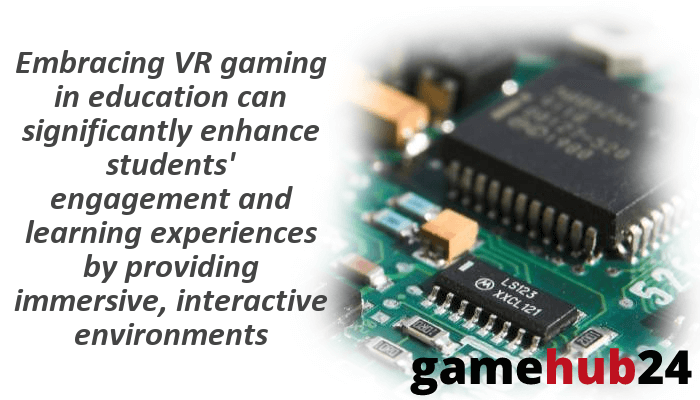
What are the latest trends in VR game design?
As technology and player expectations change, new trends in VR game design emerge on a regular basis. One contemporary trend in gaming is the shift to more physically engaging gameplay, where players are expected to walk around and engage with the environment more instinctively and naturally. Another trend is the growing attention that developers are paying to multiplayer and social VR experiences as they investigate the special potential that these places provide. In order to make VR gaming more fun for a larger spectrum of players, developers are putting more focus on accessibility and comfort. Examples of these features include configurable movement options and comfort settings.
What are the future applications of VR in gaming?
Virtual reality has a plethora of fascinating potential uses in gaming. We may anticipate increasingly physical and intuitive gaming, social and multiplayer experiences, and realistic and immersive virtual worlds as technology develops. Along with new gaming genres and varieties that are exclusive to VR, we may also witness new storytelling and narrative formats that capitalize on VR’s special qualities. Furthermore, we should anticipate greater VR integration with traditional media and entertainment, such as live events and concerts, TV series, and movies, as VR becomes more widely used. It’s an exciting time to be involved with VR gaming, as the industry has a bright future ahead of it.




